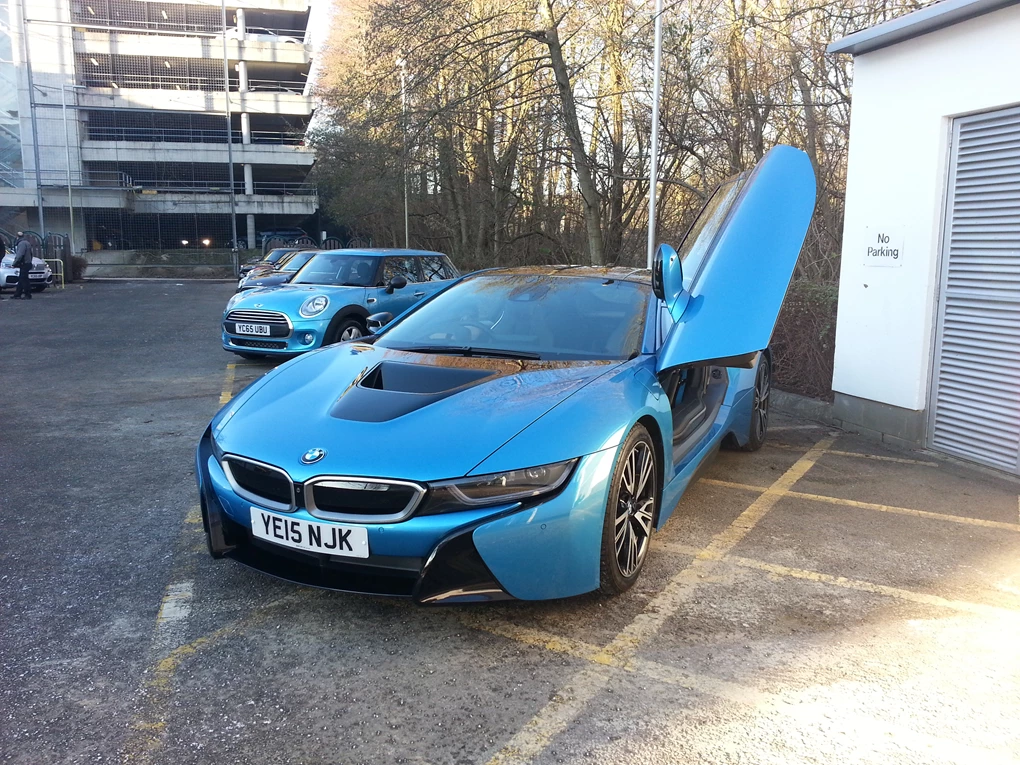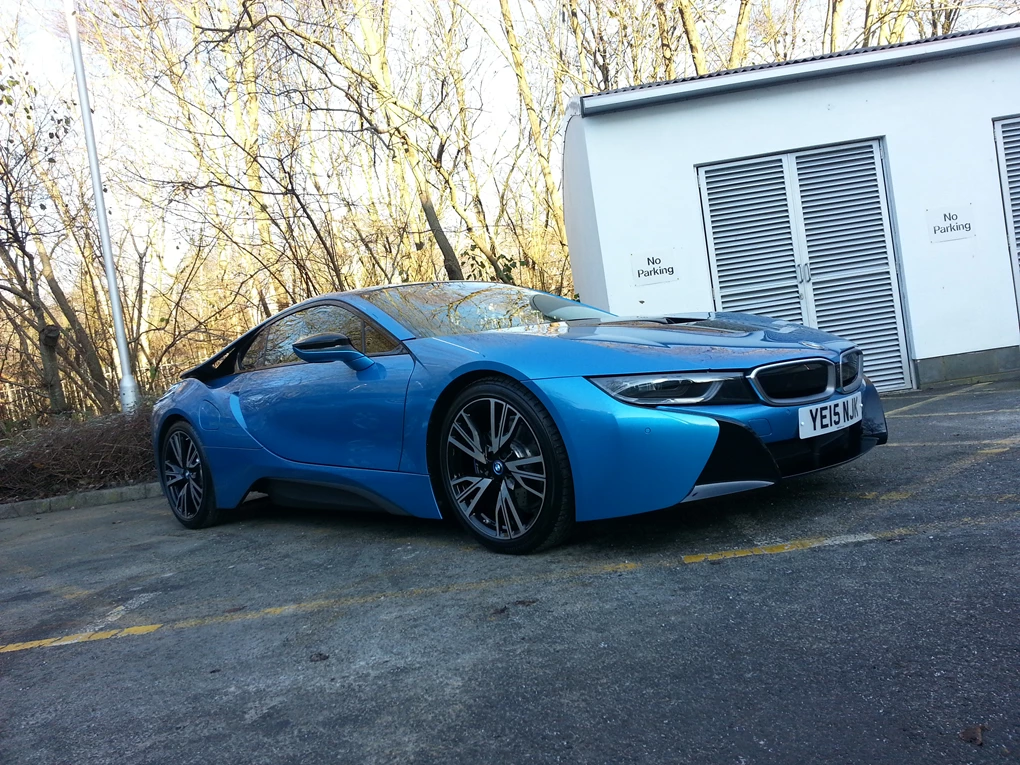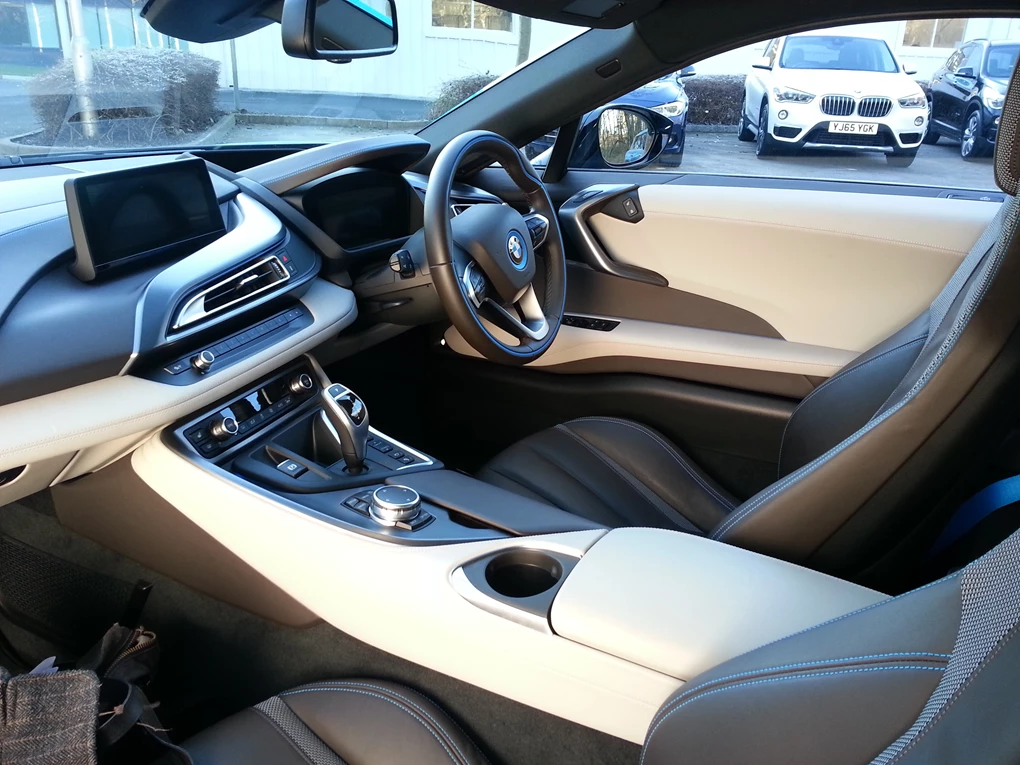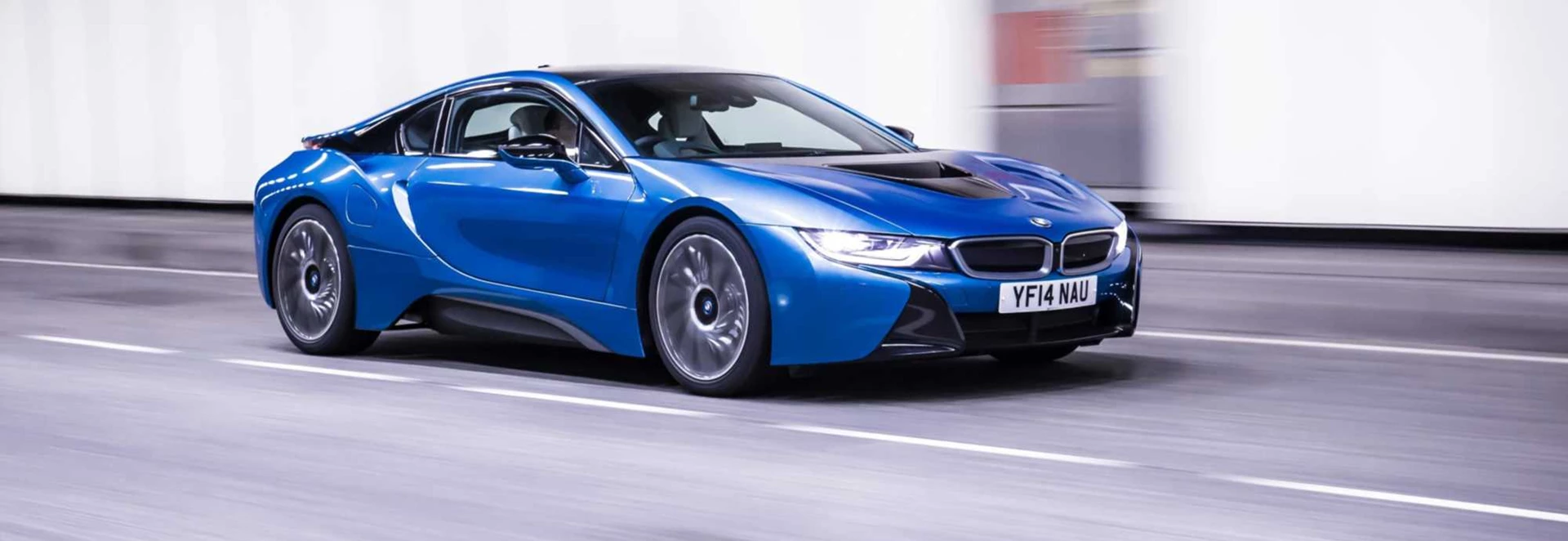BMW's plug-in hybrid sports car has won several awards - most notably UK Car of the Year and World Green Car of the Year - and is very much sought after among potential buyers, who will pay as much for a used example as for a new one.
Part of the i8's appeal is its dramatic shape, which owes a lot to aerodynamic considerations, but the powertrain is attention-grabbing too. The rear wheels are powered by a 1.5-litre three-cylinder turbo petrol engine, the front wheels by an electric motor. The axles are not connected, so this is not quite a four-wheel drive car in the conventional sense, even though all four wheels are driven.
The battery pack can be charged either on the move or by plugging it into an electricity supply. The latter feature leads to spectacular official fuel economy and CO2 emissions which are extremely difficult to replicate unless you spend most of your time driving round town in electric-only mode.

Performance
The combined output of the two power sources, when they're both switched on, is 357bhp. Standing starts are undramatic even at full throttle, since the front axle makes a typical "soft" electric-car getaway and the six-speed automatic transmission prevents wheelspin at the rear, but 0-62mph nevertheless takes just 4.4 seconds.
Acceleration in other circumstances is very strong, and it's accompanied by a pleasing roar from the little three-cylinder engine. This, however, is a false effect. The noise you hear inside the car is synthetic, though very convincing.
Onlookers hear little more than tyre swoosh even when you're driving past them flat out. In electric mode the i8 is of course practically silent, so it's best to keep an eye on pedestrians who may not have seen you coming.

Ride and Handling
Limitations become apparent only when you start driving on a track.
Apart from a slight sense that there's a lot of weight at the rear, the i8 handles beautifully on the road, and you could spend your entire ownership of the car believing that it's as sporty as it looks. With drive available to all four wheels, the i8 offers enough grip to feel both dynamic and safe while on the road. Limitations become apparent only when you start driving on a track. Here, it becomes obvious that the i8 runs on relatively narrow, hard-compound tyres, and it isn't long before the Dynamic Stability Control system kicks in. Some confusion is generated by the fact that hard application of the throttle will produce different effects at each end of the car, and at different times, a situation that would be unlikely to arise if the two axles were connected. The way you can hear what's going on at the back but only feel what the front is doing also takes some getting used to. The i8’s drive on track would benefit from wider and grippier tyres, but these would then harm the fuel economy and CO2 figures.

Interior and Equipment
The i8's engine is built at a British plant in Hams Hall, North Warwickshire. The 1.5-litre petrol-electric hybrid unit was also named International Engine of the Year 2015.
Getting into the i8 at all requires some athleticism. The upward-opening doors mean you can't just step in but have to get your backside on to the seat first and bring your legs in afterwards. Once you've got that sorted, you'll find that the interior is beautifully designed. The standard equipment list is generous. It includes DAB digital radio, satellite navigation, a head-up display, BMW Online Services, heated seats, tyre pressure monitoring, parking sensors and an excellent surround-view display are all included in the price. There's a lot of room for two tall passengers but practically none for any more, the rear seats being little more than an annexe to the 154-litre luggage compartment behind the engine. There's no storage space at all under the bonnet, which can be opened only by BMW technicians.
Cost
On paper, the 134.5mpg combined fuel economy is fantastic, but you'd have to run on battery power only for a large proportion of your journey to get anywhere near it.
With a base price of just over £104,500 the i8 is hardly cheap, not that this seems to have limited demand to any great extent. On paper, the 134.5mpg combined fuel economy is fantastic, but you'd have to run on battery power only for a large proportion of your journey to get anywhere near it. This wasn't possible when we made an unhurried run along motorway roads, where the test car could be persuaded to average only 38mpg. The official CO2 rating of 49g/km is similarly unlikely (burn more petrol and you'll produce more carbon dioxide), but since the taxman doesn't take this into account you at least have the benefit of free Vehicle Excise Duty. It also means a free pass into the London congestion zone. Benefit In Kind taxation is also in the lowest possible band, so although it will rise sharply from 5 per cent to 16 per cent by the 2019-20 financial year you'll still be paying less at that point than most other business users.
Our Verdict
A six-figure sum is a lot to pay for a car that isn't nearly as green in the real world as it is in a testing area. However, after discussing the i8 with a great many interested onlookers we doubt the environmental aspect is its principal appeal in any case. The looks attract a huge amount of attention, the straight-line performance is stirring, and although you'll have less fun on a track day than you might expect, the handling is impressive enough on public roads. It's easy to see why demand is running so high.





